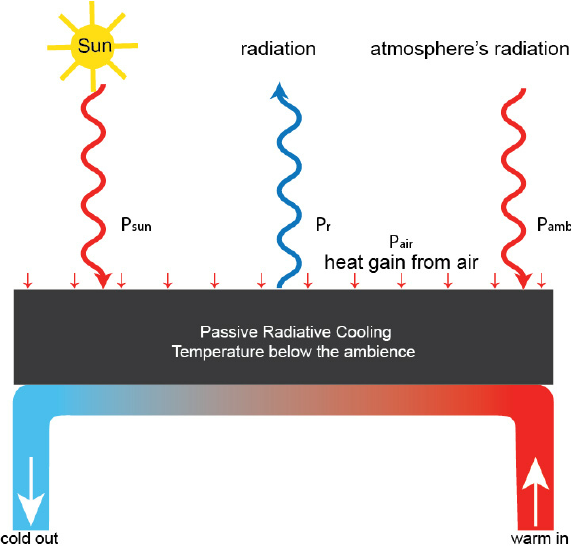We seem to have fallen into a trap. The warmer our climate gets, the more refrigeration we need to cool both us and our perishables (already we have an estimated 3.5 billion refrigerators and air conditioners), which means generating more energy, which has always meant releasing more greenhouse gases. What if there was a way we could cool off without doing any more damage to our planet?
There is. It’s called radiative cooling. Also called night sky cooling, radiative cooling is how an object loses heat through thermal radiation; it’s how frost forms on clear nights even though the temperature is above 32 degrees F. But that’s at night; is there a way to use radiative cooling during the day?
Actually, yes. Remember that both light and radiant heat are just different kinds of electromagnetic waves. The atmosphere blocks some outgoing thermal radiation, but there are “windows” that let waves of the right wavelength escape. University of California at Los Angeles materials scientist Aaswath Raman is trying to find those windows. Basically, he and his colleagues have developed a thin, mirror-like film that sends heat into space while absorbing almost no radiation. The result is object temperatures can be lowered by more than 10 degrees, even in the midday sun. Raman and his collaborators have founded SkyCool Systems, a company to make practical use of this concept.

This all sounds like science fiction, but it has the potential to help cool the planet without expending even more energy. We can only hope it’s commercially viable.
For more information, see “Bringing the chill of the cosmos to a warming planet” by Sarah Kaplan (https://www.washingtonpost.com/climate-solutions/2020/10/07/radiative-cooling-climate-change/?arc404=true).
